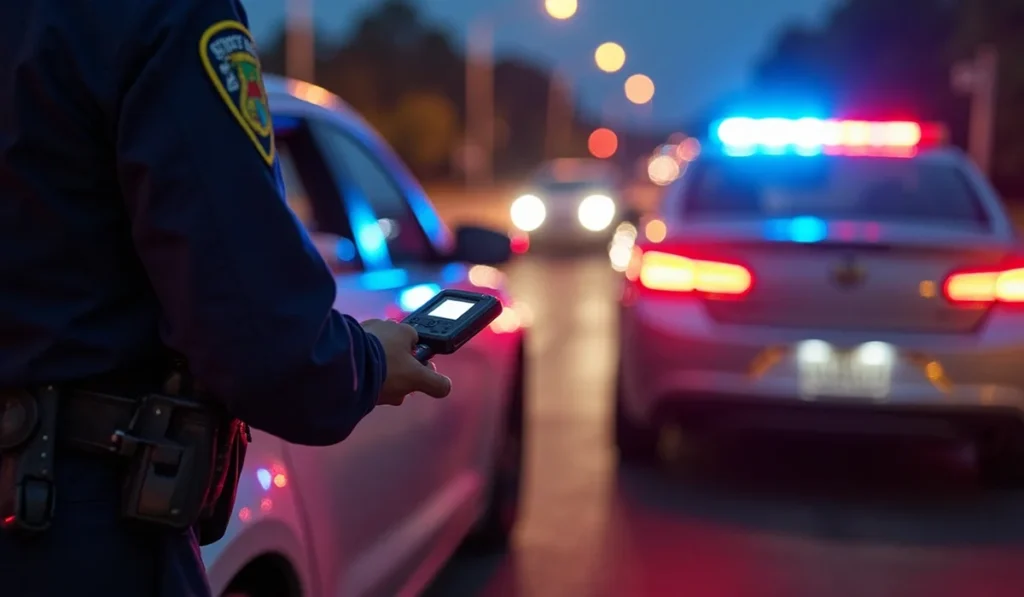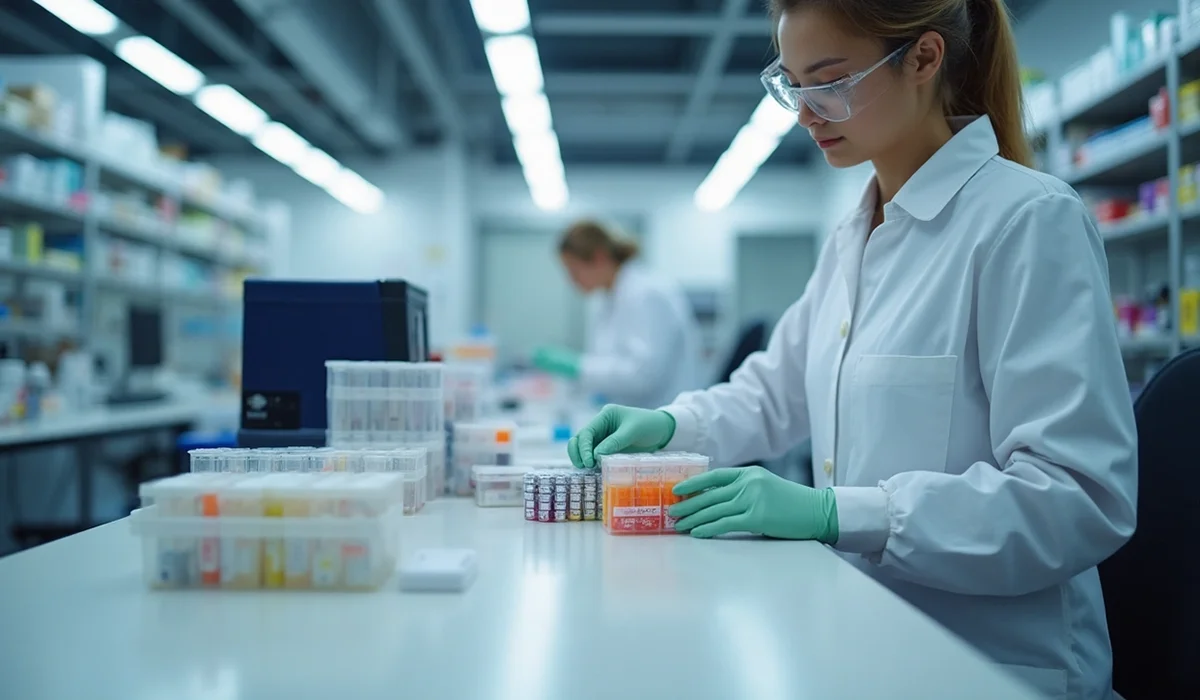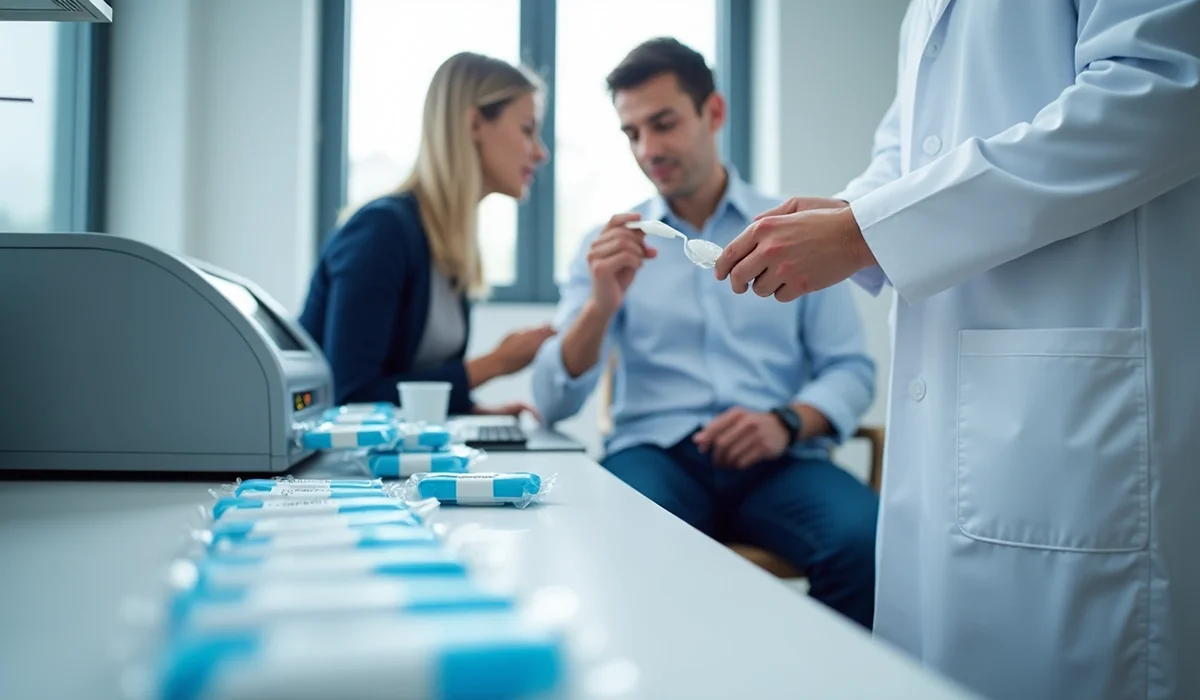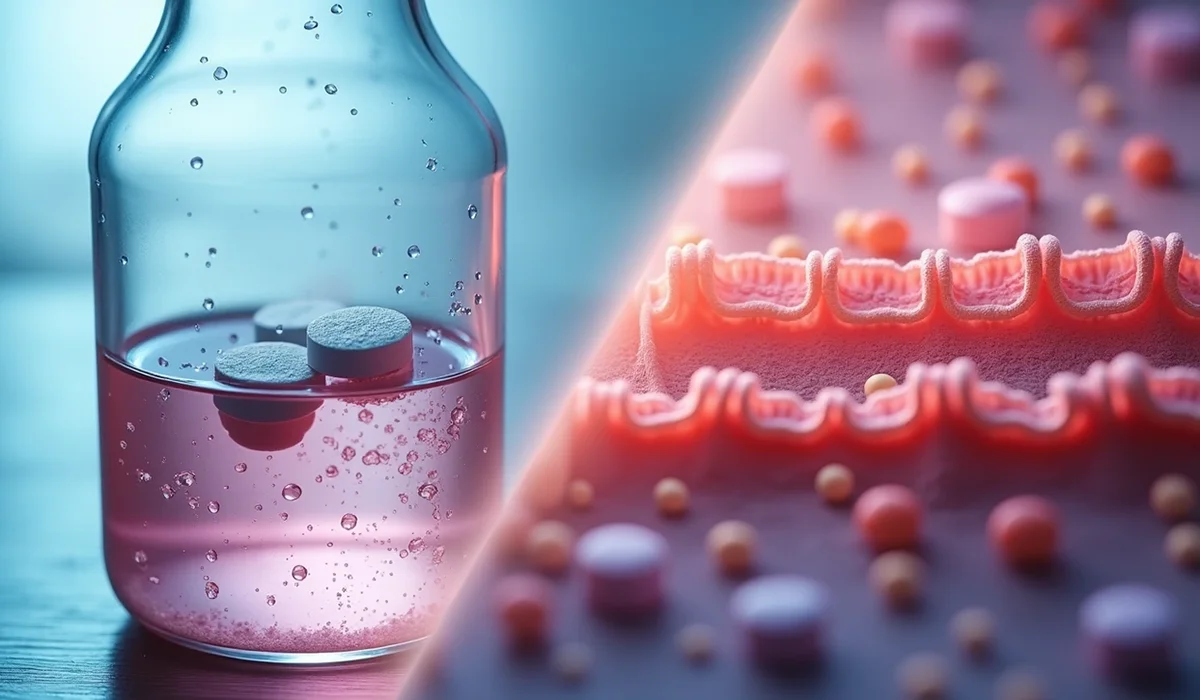Michigan moves closer to making roadside drug detection through oral fluid testing legal. The Michigan House Committee voted 5-0 to approve House Bills 4390 and 4391. These bills would let police officers screen for controlled substances, including marijuana, through roadside oral fluid tests. The measure moves forward despite pilot programs showing nearly 11% error rates when compared to blood tests.
Roadside drug test programs have permanent status only in Alabama and Indiana, though more than 25 states have run pilot programs. The process involves collecting saliva samples that detect recent drug use much faster than other methods. Rapid oral fluid testing brings certain benefits over blood testing (the “gold standard”), and comparing oral fluid tests to urine screening shows different detection windows. The sort of thing I love about this topic relates to accuracy concerns and their impact on civil liberties.
These bills would allow arrests based on saliva test results alone, even though THC stays detectable in saliva long after impairment effects fade. The proposed law would also let any law enforcement officer conduct tests, not just specially trained drug recognition experts. Supporters say these measures will reduce impaired-driving deaths. Critics point to Michigan’s declining drug-involved crashes, which dropped from 2,636 in 2018 to 2,250 in 2023.
Michigan House Committee Approves Oral Fluid Testing Bills
The Michigan House Government Operations Committee has pushed forward new legislation to make roadside drug testing a permanent fixture statewide. Committee members unanimously approved House Bills 4390 and 4391 on May 22, 2025. All five representatives voted to support the measures.
HB 4390 and HB 4391 pass unanimously in committee
Republican Representative Brian BeGole, who previously served as Shiawassee County sheriff, and Democratic Representative Julie Rogers of Kalamazoo joined forces to tackle drug-impaired driving. Rep. Rogers testified that oral fluid testing serves as “a complementary tool” helping officers “when formulating reasonable suspicion or probable cause determinations”.
The bills gained momentum after a 5-0 vote and moved ahead with adoption recommendations. The Committee on Rules received HB 4391 with a substitute (H-2). This legislation builds on successful pilot programs from nearly 70 Michigan counties.
What the proposed legislation allows law enforcement to do
The new laws would let police officers use handheld devices with mouth swabs to screen drivers they suspect of drug-impaired driving. SoToxa testing machines detect various substances quickly within five minutes and cost about $6,000 each. These devices can identify:
- Marijuana (THC)
- Amphetamines and methamphetamines
- Cocaine
- Opioids
- Heroin
- Benzodiazepines (such as Xanax or Valium)
Police officers could make arrests based on these roadside test results. Rep. BeGole explained the testing procedure: officers place a sterile swab in the subject’s mouth and rub it under the gums, tongue, and inside the cheek. The device analyzes the sample once the swab turns blue.
“It’s not going to tell you a percentage of intoxication or anything like that,” BeGole said during his testimony. “It’s just going to tell them whether it’s positive for methamphetamine, amphetamine, heroin, cocaine, THC or benzodiazepine”.
The proposed changes would update the Michigan Vehicle Code. Oral fluid testing would receive similar treatment to current preliminary breath tests used for alcohol screening. A positive roadside result would trigger a second sample collection in “a more secure setting.” Prosecutors could use these lab-confirmed results as evidence.
How Oral Fluid Testing Works in Practice
Roadside drug screening lets officers check for potential drug use right away using portable devices that analyze saliva samples. Let me walk you through how this technology works.
What is oral fluid testing and how is it administered?
Oral fluid testing looks for drug compounds in a person’s saliva samples. A person’s oral fluid contains saliva mixed with gingival crevicular fluid, cellular debris, bacteria, and mucosal transudates. The collection is simple – officers place an absorbent pad in the subject’s mouth and rub it along the gums, tongue, and inside of the cheek. The device’s color indicator shows when enough sample has been collected. The whole process takes about 5-10 minutes. The sample goes into a buffer solution that stops bacterial growth before the device analyzes it.
Drugs detected by rapid oral fluid testing
Today’s oral fluid testing devices can spot many substances at once, including:
- Amphetamines and methamphetamines
- Cocaine and metabolites
- Opiates/opioids
- Cannabinoids (THC)
- Benzodiazepines (though detection is challenging)
- Phencyclidine (PCP)
- Methadone
Field data shows these tests work best with amphetamine, cocaine, opiates and cannabinoids. The tests struggle with benzodiazepines, with one study showing only a 22% match rate.
How oral fluid testing compares to urine and blood tests
Oral fluid testing’s biggest advantage is that it can detect drugs within 30 minutes of use. The detection window is much shorter – usually 5-48 hours for oral fluid compared to 1-7 days for urine and up to 90 days for hair. These tests relate better to blood tests in showing active impairment rather than past use. Officers can watch the oral fluid collection without privacy concerns, which makes it almost impossible to fake or switch samples. The only drawback is that oral fluid’s drug concentrations are lower than urine, so the testing methods need to be more sensitive.
Why Critics Question the Accuracy and Fairness
Critics keep raising serious concerns about Michigan’s proposed oral fluid testing program. The program’s effectiveness and fairness face challenges due to scientific limitations and potential rights violations.
False positives and pilot program error rates
Scientific studies reveal accuracy problems with rapid oral fluid testing devices. Michigan’s own pilot program showed an 11% rate of inaccurate results compared to blood tests. Tests on devices like the Draeger DrugTest 5000 showed false positive rates of 10% and false negative rates of 9%. The DW5s device produced 5% false positives and 16% false negatives. Both devices failed to meet the 80% minimum standard for sensitivity, specificity, and accuracy set by major research initiatives. The Abbott SoToxa device used in Michigan has shown false positive rates between 11.2% and 24% in various tests.
Concerns over THC detection and legal cannabis use
The biggest problem lies in the gap between detection and actual impairment. THC can stay detectable in saliva up to eight days after cannabis exposure, well after any impairing effects are gone. No universal threshold exists for THC impairment, though some states have set arbitrary limits at 5 nanograms per milliliter. Legal cannabis users might face penalties even when they’re not impaired. The accuracy drops lowest at 60 minutes after use, right when THC concentrations often hover near screening cut-off levels.
Civil liberties and refusal penalties
These tests create substantial constitutional questions beyond accuracy concerns. The tests collect DNA along with saliva, which raises privacy concerns. We found they might unfairly affect vulnerable populations – the ACLU notes people with disabilities taking prescription medications could face longer detentions. Racial disparities already exist in traffic stops, so these tests might put an extra burden on people of color. The proposed Michigan law makes test refusal a civil infraction with financial penalties. This forces people to comply with a scientifically questionable procedure.
What the Bills Mean for Law Enforcement and Drivers
Michigan’s new legislation changes how police operate and handle motorists who face drug-impaired driving charges. These bills bring major changes to the state’s enforcement system.
Impact on drug recognition experts and arrest procedures
Michigan currently restricts oral fluid testing to certified drug recognition experts (DREs) who take part in pilot programs. The new legislation gives testing authority to any trained officer. This marks a big change from previous pilot programs where departments performed very few tests—each conducting less than five tests and identifying only three drugged driving incidents in one year.
Officers perform oral fluid screening after completing an impaired driving investigation. They first conduct field sobriety tests and preliminary breath testing to establish probable cause for a drug-impaired arrest. The new law allows officers to make arrests based in part or fully on preliminary oral fluid analysis results. Commercial vehicle operators who refuse the test receive a 24-hour out-of-service order and civil infractions.
Legal admissibility of test results in court
Roadside test results serve as preliminary screening tools that show drug presence above set cut-off levels, not exact amounts. Courts cannot use these first results as evidence. The results serve three specific legal purposes:
- Assisting courts in determining arrest validity
- Evidence of drug presence/absence if offered by defendants to rebut testimony
- Evidence of drug presence/absence if offered by prosecution to rebut testimony
Laboratory confirmation testing of a second sample provides the only evidence courts can use for prosecution. Courts usually order these tests for cases that involve impaired driving, workplace injuries, or probation compliance.
Potential increase in impaired driving convictions
Drug-impaired crashes claimed 230 lives in Michigan during 2023, with impaired drivers causing over 10,000 crashes. In the last decade, drug-involved crashes killed nearly 2,500 people statewide. Supporters believe oral fluid testing could boost conviction rates because it identifies recent drug use within 24 hours instead of detecting substances from days or weeks before.
Indiana’s preliminary data shows promising results since implementing oral fluid testing in 2020. The state saw a 14% increase in laboratory submissions and more cannabis identifications in blood samples.
Final Thoughts on Michigan’s Oral Fluid Testing Legislation
Michigan lawmakers unanimously support these testing measures, but major questions still exist about their real-life application. The pilot programs showed an 11% error rate that can’t be ignored, especially when you have someone’s freedom at stake. Michigan now faces a choice between expanded enforcement capabilities and possible civil liberty violations.
Supporters definitely make strong points about roadside testing efficiency. Knowing how to detect recent drug use within minutes instead of hours or days could improve investigations. We must recognize the gap between detection and actual impairment – especially when you have cannabis, where THC stays present long after any impairing effects have disappeared.
Only specialized drug recognition experts could run these tests during limited pilot programs before. This legislation lets any trained officer gain this authority, which creates a fundamental change in Michigan’s approach to drugged driving enforcement.
Michigan residents need to understand what these bills mean for their rights. Test refusal would lead to civil infractions and penalties, which forces compliance with a scientifically questionable procedure. This raises more concerns given the known disparities in traffic stops.
The bills move forward with strong bipartisan support despite these concerns. No one knows if these measures will reduce drug-impaired crashes yet. Indiana’s evidence looks promising, but many experts question whether the benefits justify the potential impact on civil liberties.
Michigan’s preparation for this fundamental change requires balancing road safety needs against scientific accuracy and constitutional protections. The state risks creating a system that punishes legal behavior instead of targeting actual impairment without proper safeguards and better testing technology.

